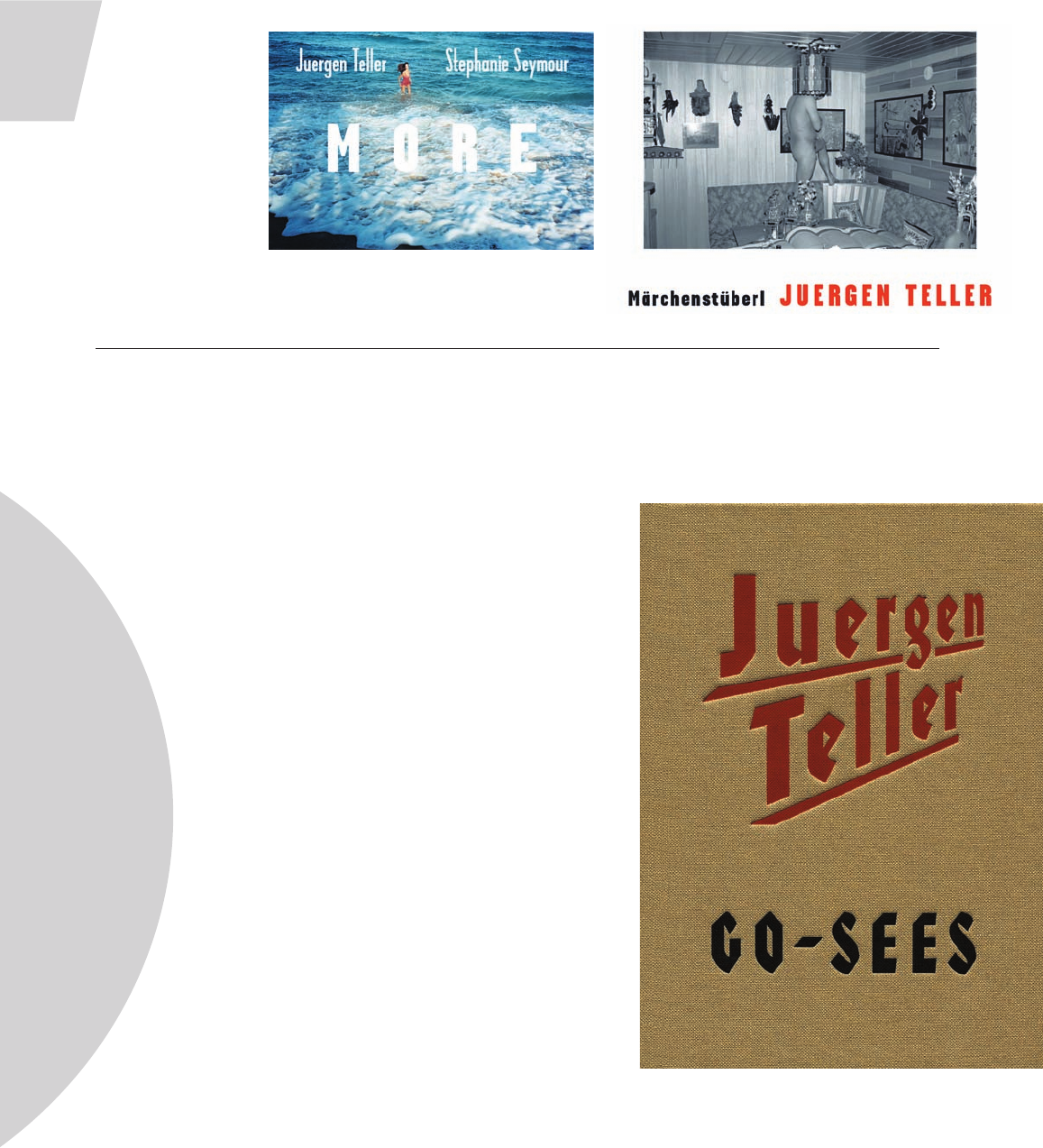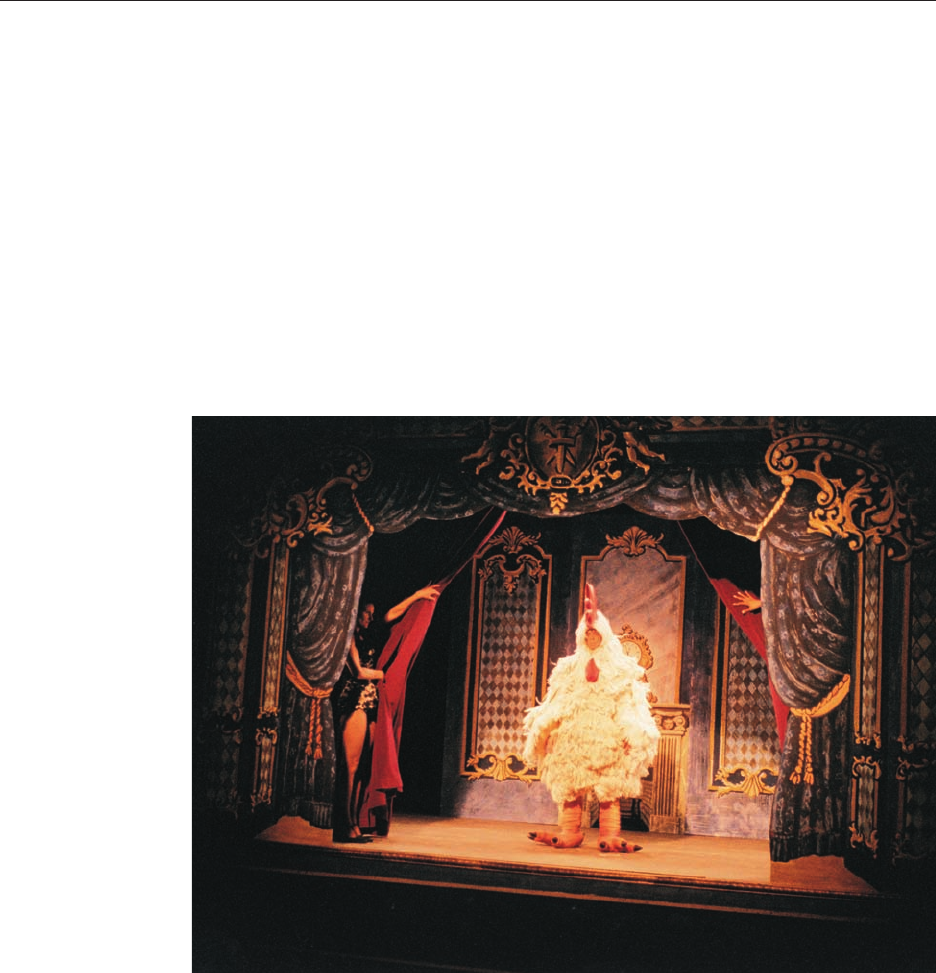
Job: 02762 Title: 365 Habits of Successful Graphic Designers (Rockport)
Page: 149
118-213 02762.indd Sec1:149 7/20/11 2:09 PM
149
Job: 02762 Title: 365 Habits of Successful Graphic Designers (Rockport)
Page: 149
Text
The designers at FUEL have a strong working
relationship. “Good ideas are formed without
compromise,” comments Damon Murray.
“Equally good work is made easier if it is
produced with like-minded creatives, such as
the photographer Jürgen Teller. With him there
is an element of trust and mutual respect. The
best work is made by and for people who are
not prepared to compromise.”
Initially the team had asked Jürgen Teller to
shoot a portrait of themselves in their studio for
one of their magazines, Grey. The relationship
grew when Teller asked FUEL to design an exhi-
bition of his work at his house. FUEL then went
on to design his show at the Photographers’
Gallery in London and from that project other
exhibitions across Europe and in New York.
Throughout this period, FUEL also designed
books and catalogs to accompany Teller’s per-
sonal work.
For FUEL, never compromising means making
choices early in the creative process, which
assures that all participants are in agreement
in terms of the parameters of the project.
Although “like-minded” is a vague descriptor,
when finding creative partners, FUEL insists
they know it when they see it.
THE SECRET OF A SUCCESSFUL PARTNERSHIP IS
TO NEVER COMPROMISE
MILES MURRAY
SORRELL FUEL
96
Jürgen Teller books, designed by
Miles Murray Sorrell FUEL
118-213 02762.indd Sec1:149 7/20/11 2:09 PM

Job: 02762 Title: 365 Habits of Successful Graphic Designers (Rockport)
Page: 150
118-213 02762.indd Sec1:150 7/20/11 2:09 PM
150
365 HABITS OF SUCCESSFUL GRAPHIC DESIGNERS
Job: 02762 Title: 365 Habits of Successful Graphic Designers (Rockport)
Page: 150
Text
Stefan Sagmeister co-directed a Lou Reed
music video with Robert Peijo, a documentary
filmmaker. Before working on this project,
Sagmeister had no experience with moving
pictures whatsoever. Because of his inexperi-
ence, he asked his friend for help—Peijo had
much more experience with being on the set,
directing a crew properly, and with postproduc-
tion. Sagmeister had worked directly with Reed
before, designing the CD art for the 2001
release, Ecstasy, so he was comfortable with
ensuring that the concepts that he suggested
were clear with Lou and with the record label.
COLLABORATE WITH SOMEONE IN A DIFFERENT FIELD
STEFAN SAGMEISTER
97
Sagmeister has gained new knowledge in
the field of video design and production, an
experience that will help him explore new tech-
nologies of the Internet, as well as open up
imaginative processes that suggest new ways
of doing design.
Lou Reed video, designed and directed by Stefan Sagmeister and
Robert Peijo
118-213 02762.indd Sec1:150 7/20/11 2:09 PM

Job: 02762 Title: 365 Habits of Successful Graphic Designers (Rockport)
Page: 151
118-213 02762.indd Sec1:151 7/20/11 2:19 PM
Job: 02762 Title: 365 Habits of Successful Graphic Designers (Rockport)
Page: 151
Text
WORKING WITH OTHER CREATIVES
151
Jamie Sheehan’s skills complement Art Chantry’s
in a dramatic way. Sheehan is adept at comput-
er technology, whereas Chantry is self-admitted-
ly not, instead taking a sociocultural approach
to their usefulness. “Computers,” says Chantry,
“especially in their early days, were a process in
erasing localized culture. And because culture
is what I am interested in, it was a choice not
to work with them. As it has developed it is now
where underground subculture exists.”
Chantry describes Sheehan as a “crack typog-
rapher” and himself as a “lettering artist,”
complementary and yet very different skills.
Sheehan has had a lot of experience in copy
writing and thinking up gimmicks, whereas Art’s
work is primarily the creation and promotion of
a specific style.
Art Chantry’s involvement in the do-it-yourself
punk scene in the 1980s and ‘90s in the Pacific
Northwest created the context for his distinctive
style and the reach of his work. The graphic
elements of such a scene are limited but dis-
tinct—record and CD packaging, event post-
ers, and weekly newspaper design all fueled
Chantry’s success as a pioneering designer in
this particular milieu.
COLLABORATE WITH SOMEONE WHOSE SKILLS
COMPLEMENT YOUR OWN
ART CHANTRY
98
St. Louis Film Fest poster, designed by Art Chantry and
Jamie Sheehan
118-213 02762.indd Sec1:151 7/20/11 2:19 PM
Get 365 Habits of Successful Graphic Designers now with the O’Reilly learning platform.
O’Reilly members experience books, live events, courses curated by job role, and more from O’Reilly and nearly 200 top publishers.


